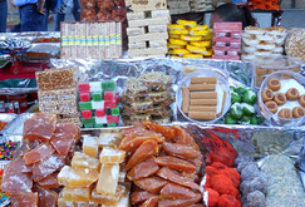As I write this month’s article, I am sitting beside a wood stove in a cabin by a frozen lake in Ontario. So this article’s topic becomes very tangible and important, especially because I want to keep my fingertips warm. Although, typically we rarely need them and only use them during the coolest nights of the year, the fireplaces in your homes need to be maintained and operated correctly.
For those of you who are burning wood, you should be purchasing your wood from a respectable dealer who is getting his wood from legal sources. All trees are protected in Mexico however, with the correct permissions, one can cut down a tree and have it removed. Generally, a trustworthy firewood dealer will be using wood that has been taken from these legal sources. You can simply ask him where he got the wood, and likely it was from legal tree removal and not a covert tree cutting in the mountains. You can expect a cost of approximately $1200 to $1600 pesos per small pickup truck load delivered to your home. Better types of wood (such as mesquite) will cost more, however these are usually used in barbeque situations.
Before using your fireplace, check that the chimney exit has not been clogged with a bird’s nest or debris from a rodent. In general, the interior throat of the chimney should be checked as well. The throat is the opening for the chimney just above the firebox where the heat and smoke escape through an elongated opening at the top and front of the firebox. In rare cases, the opening is at the back of the firebox, however this is not as efficient as the former for removing the smoke from the firebox and preventing the smoke from entering the room.
In general, most fireplaces do not have an operable flue damper to control the flow of smoke out the chimney or to keep the cool air from entering the firebox from the chimney above. This opening can sometimes be blocked with bricks or tiles when not in use and sometimes can be the favorite location for the cat to sleep and hide away. Placing a screen at the top of the chimney where it exits the roof will usually prevent birds and rodents from entering, and finer screens can prevent mosquitoes from entering during the summer months when the fireplace is not in use.
For those fireplaces that have a source of gas for an insert or gas log starter, the gas valve should be located at the side of the fireplace and, for safety reasons, not inside the firebox or below the front of the hearth, in front of the firebox. Some artificial gas log inserts will have a thermostat beside the insert, inside the firebox, however the main shut off valve should still be located outside and away from the firebox.
In both the case of wood fireplaces and, especially with gas, a smoke detector and carbon monoxide detectors should be installed in the home. Some homeowners believe that homes here are generally “leaky” and permit fresh air to enter the home, however, carbon monoxide can pool into some areas of the home and cause people to feel ill, have headaches and, in the worst case, cause death. Although not required by any local, state or federal authority, they are a cost-effective safety element. Carbon monoxide can be a problem, especially in the winter months when a home is closed up at night or there are other sources of combustion such as a water heater located in an interior room that is not ventilated to the exterior of the home.
Finally, many fireplaces in the Lake Chapala region have simply a brick interior to the firebox and are not lined with a fire brick, which helps reflect and radiate the heat of the fire back into the room where it is needed rather than allow most of the heat to escape up and out the chimney. Typically, firebrick has a more yellowish colour and is more ceramic in appearance with little or no porosity to the brick. These bricks are thinner in profile and need to be cemented to the interior walls of the firebox using a special, heat resistant cement to glue them securely to the walls.


